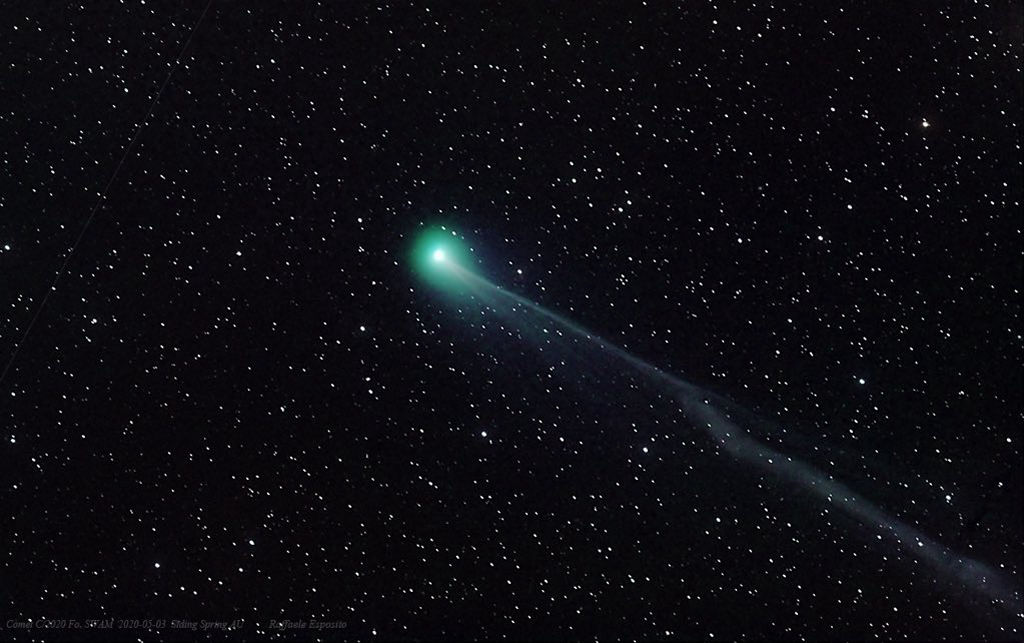Comet SWAN Is Now Visible To The Naked Eye
Newly discovered Comet SWAN is brightening rapidly and can be seen to the naked eye, as astronomers have revealed. Read on and get ready to witness the arrival of the deep space visitor.
Comet SWAN: Latest news
Comet C/2020 F8 (SWAN) has increased its brightness dramatically from magnitude 8 to magnitude 5.2, which is bright enough to see it with unaided eyes under dark clear skies. Some skywatchers have already seen it with unaided eyes and through binoculars and managed to get nice photos.
Comet SWAN is now 96,034,442 km away from Earth and is best seen from the Southern Hemisphere. According to scientists, in late May, it'll become visible in binoculars and telescopes from southern parts of the Northern Hemisphere.
A Naked-Eye Object
Astronomers believe that Comet SWAN will get brighter in the nearest future if it doesn’t disintegrate as Comet ATLAS did. If the comet continues to gain brightness at the current rate, it should turn into an obvious naked-eye object in mid-May.
As we wrote earlier, Comet SWAN promises to grace the sky in the middle and the end of May. On May 12-13, 2020, it will make the closest approach to Earth at a distance of 52 million miles (84 million km). It is predicted to reach a peak magnitude of approximately 2.5 - 3 on May 27, 2020, at perihelion (closest approach to the Sun). It will be 40 million miles (64.4 million km) away.
Given that comets are very unpredictable, C/2020 F8 (SWAN) may disintegrate and fade out at any moment. Not to miss the bright object in the sky, observers can try to spot it right now.
How to see Comet SWAN in May 2020?
Scientists are not sure how long the comet’s visit will last. If you would like to track the movements of Comet C/2020 F8 (SWAN), check the stargazing app Star Walk 2 where you can find real-time information about the comet's location in the sky.
Comet SWAN is currently located near the Pisces constellation. On May 15, it will visit the constellation of Triangulum, and on May 18, cross into the constellation of Perseus. On the nights of May 19, 20 and 21, Comet SWAN will be very close to the star called Algol (Beta Persei, colloquially known as the Demon Star).
Comets are great to look at because of their beauty. In Star Walk 2, you can also find and track Comet С/2020 F3 (NEOWISE). Discovered on March 27, 2020, this retrograde, long-period comet is increasing in brightness and is expected to reach perihelion and its maximum brightness of up to 2.5 magnitude in early July.
